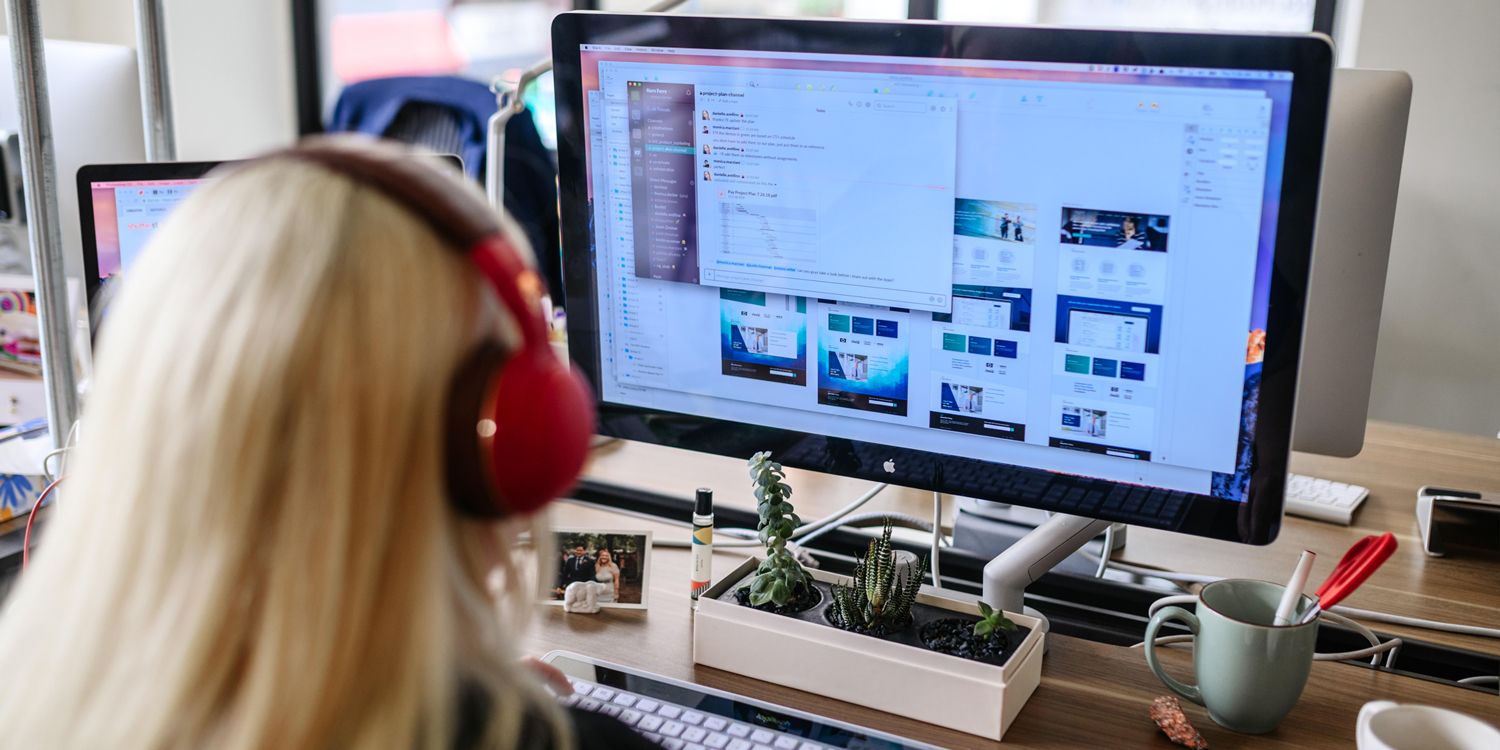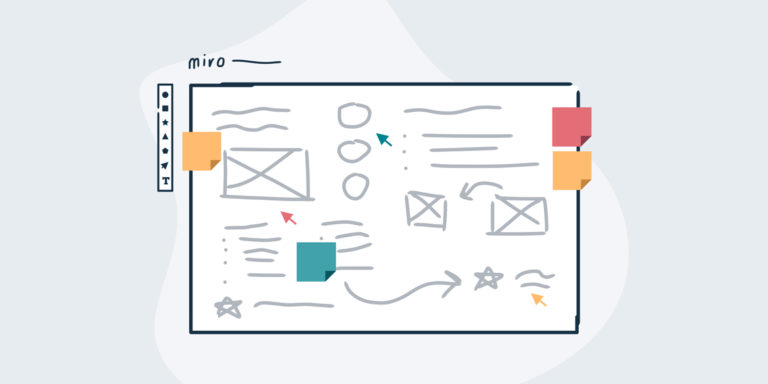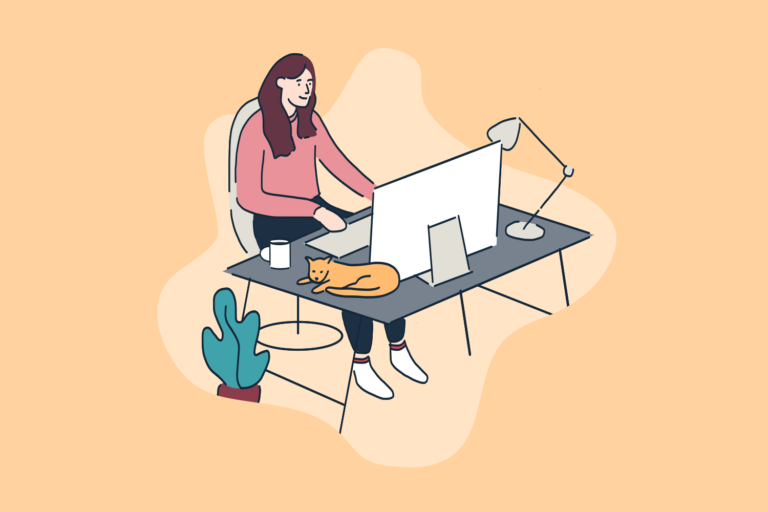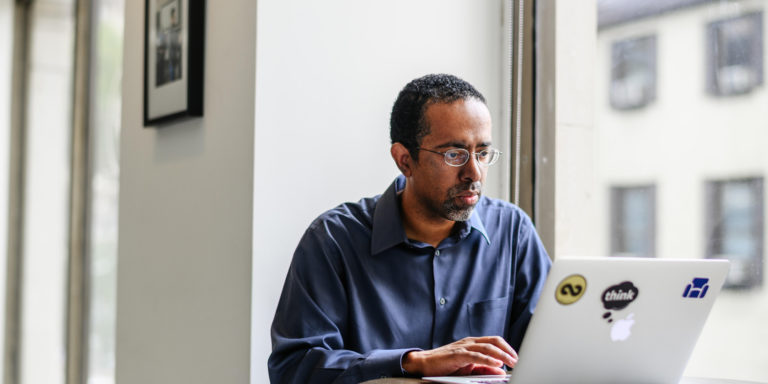Many creative teams have adjusted to a semi or fully-remote model this year—and perhaps for the foreseeable future. It’s also a reality that remote creative roles may become more of the norm moving forward. With this shift, it’s clear that many of our former rituals, habits, and sources of inspiration for leading creative work don’t and can’t look the same anymore.
At Think Company, remote work has been built into our team’s structure and daily operations. But in the moments when we most need to collaborate on a project, task, or solution, we prefer getting the team together—in person—around a whiteboard to ideate. Our team has been hard at work adjusting this year to foster design culture in our team while at a distance.
What Do We Mean by “Creativity”?
In the context of our work, we use the term “creativity” to describe solving challenges together. It’s a creative endeavor to solve big, complicated design and technology problems for our clients and work through a solution that will impact business goals. How can a team tackle challenges like this without being physically together to think through the large and small pieces of a solution?
At our recent event, Creative Work at a Distance, members of our design and technology teams had a conversation about what we’ve found works, what has been challenging, and what we’re experimenting with to lead and create meaningful work while apart. Below are our overarching takeaways.
A Creative Team Starts with Healthy Team Members
“Staying healthy” is step one for good creative work, and it can take on many forms. For those of us working remotely, a number of environmental realities can impact our energy and effectiveness.
It almost goes without mentioning that screen time is a big factor in working together virtually. We’re also missing small things that have always contributed to our creative energy, like our daily commute—which can be a huge source of decompression time, regular exercise, and fresh air.
Our Tips:
- Create the space to walk away from your screen—even if it’s a trip to another room to sit in a chair and give your eyes a rest. Make this a regular practice for yourself and your team.
- Test out little things that recreate the benefits of your former routine, like taking a walk around the block before and after work. Setting book-ends to your day will help you transition between work and home—especially now that the two feel blended.
- Maintain monotonous tasks—even something as simple as emptying the dishwasher on a regular schedule every morning. This can be a great source of basic routine and accomplishment that may inspire you to kick-start your day with focus.
Redesign Social Interaction to Keep Creativity Flowing
Social interaction at work is an important part of fueling creativity that feels infinitely more difficult to do remotely. Often, the more we have going on in our lives, the more we have to talk with other people about—and the more we exchange ideas with other people, the more we are inspired to revisit our work with new ideas.
Intentionality is key. You don’t need to default to a virtual alternative for every social interaction, but it’s important to make sure you’re clear about how you want to use time that you set aside with people.
Our Tips:
- If you can, set short, intentional times during the work week for virtual social interaction with your team, and make this clear upfront. This can feel unnatural at first, but it pays off (and gets easier) in the long run.
- If your team uses Slack, use the Donut integration to get randomly paired with colleagues for virtual social meetings. We’ve been using Donut at Think Company and have recognized its value for those who thrive on social interaction—and for those who need a nudge.
Lean Into Working Synchronously and Asynchronously
A mix of synchronous work (working together) and asynchronous work (working independently, but in parallel) has been a common practice among Think Company’s development team in particular for years. The team often collaborates in meetings and discussions, then works in parallel streams to build.
A lot of creative work is inherently synchronous, but you may be surprised to learn that some people thrive creatively while working more asynchronously. As a leader, it’s your job to do the heavy lifting of figuring out how to collaborate effectively with teams and individuals who have diverse working styles, and finding ways to blend these styles together.
Our Tips:
- Get into the habit of chunking out creative work into group working sessions and parallel, but individual sessions. Allow your team to work through solutions in whatever style leads to creative progress. Encourage your team to try out both methods and see what happens.
- Focus more on the “places” where people can contribute—whether it’s a large conversation during a meeting, notes in a digital Kanban board later at night (when they feel most inspired), or comments in a collaborative document that multiple people are working on.
Find New Ways to Inspire Creativity in Others
Pulling creative ideas out of your team requires an emotional intelligence that comes more naturally in person. When virtual, people aren’t as tuned into body language—and it can be easy to disengage with what people are saying on video.
Our Tips:
- When on a video meeting, consistently scan the panels to watch people’s reactions, facial expressions, and small signals that they may have more to say, like unmuting. Keep a consistent “spidey sense” about who seems more or less engaged, and follow up with people one-on-one. Strengthen this muscle to gradually improve your virtual situational awareness skills.
- Try to avoid situations where team members feel stuck in their own heads solving a problem alone. Make yourself available for impromptu chats and virtual ideation sessions throughout the day, and encourage your teams to do the same with their peers.
- Encourage your team to take “mini adventures.” One of our Design Leads has been taking long, meandering walks around her neighborhood to regularly take in new sights, sounds, and smells. This small act can give you and your team a jolt of inspiration when needed.
Embrace the Benefits of a Level Playing Field
When working with external teams in particular, being physically apart has leveled the creative playing field in surprisingly positive ways. Teams are no longer separated by studios and conference rooms, and every contributor is in their own Brady Bunch square. We’ve seen first-hand that some people feel more empowered and find their creative voice this way—which leads to better work and collaboration.
Our Tips:
- Acknowledge that formality is out the window. Change the tone of your meetings from formal presentations, for example, to a more casual touchpoint to share progress on a project. In our experience, this approach can smooth the wheels of making a decision and pushing past blockers.
- Embrace the vulnerability that comes from working remotely. We’re all exposed to each other’s homes, families, pets, and more, and while this changes team dynamics, this change can and should be seen and recognized by your team as a positive one.
Intentionality, Communication, and Emotional Literacy are Key
Being physically separated doesn’t have to halt creative work. As leaders, you can seek out and implement necessary shifts that have a ripple effect on the creative energy of the rest of the team. Try new things, stay in tune with the people around you, communicate often, and acknowledge the many positives of creative work at a distance.



